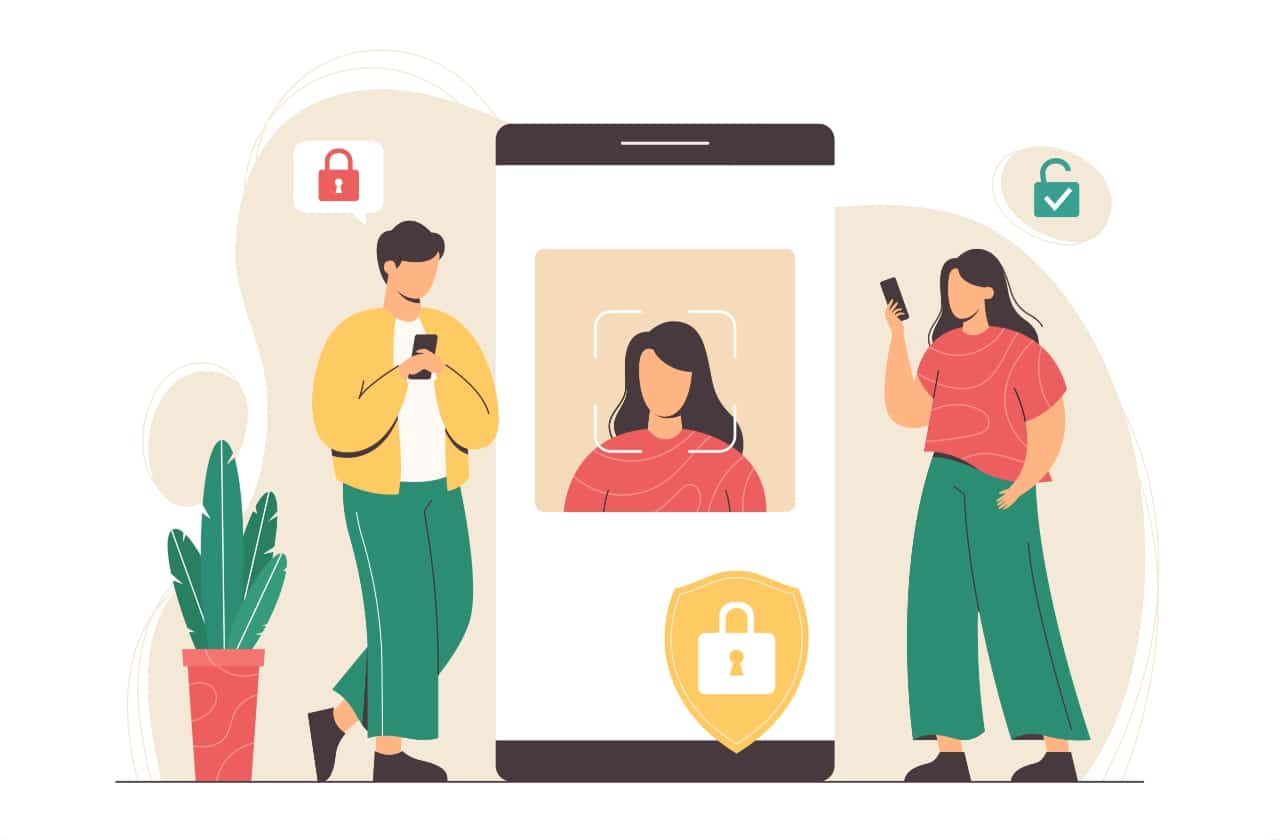
From identity verification to access control, payment processing and employee time tracking, facial recognition is making waves across industries.
Facial recognition technology uses artificial intelligence (AI) and machine learning (ML) to identify people based on their facial features. Its use has grown exponentially in recent years, heralding a new era of secure, efficient and seamless digital identification.
Despite its already advanced capabilities, the technology is still developing, driven in part by the pandemic and the rapid transition to digital service delivery. Facial recognition algorithms are consistently being upgraded with new functionality.
It’s not a question of whether facial recognition will change the business landscape but of the scale of its impact.
Facial recognition vs. facial verification
It is important, however, to distinguish facial recognition from facial verification. While they are both types of facial biometric technology, facial recognition is used to identify unknown individuals, while facial verification is used to confirm the identity of a known individual.
For example, at an airport security checkpoint, facial recognition scans the faces of passengers as they approach the gate. The system matches their faces against a database of known or suspected terrorists, criminals, or people who are on a “no-fly” list.
If you download a bank’s mobile app and use it to open an account online, you might be prompted to take a selfie with your smartphone camera. The bank’s facial verification software then compares your selfie to the photo on your government-issued ID, like a driver’s license or passport, to confirm that you are who you say you are.
Real-world applications of facial recognition technology
It’s expected that facial recognition technology will see a compound annual growth rate (CAGR) of 16.13% between 2023 and 2030. Facial recognition technology is being used across industries, from retail and hospitality, to transportation and finance.
Here are some examples of how facial recognition technology is already changing the way businesses are operating:
- Retail: Some retailers are using facial recognition technology to identify shoppers and provide personalised recommendations based on their history and preferences.
- Hospitality: Hotels have started to use facial recognition technology for check-in, minimising guest wait time.
- Transportation: Many airports are using facial recognition technology for passenger verification and boarding, eliminating the need for more time-consuming manual ID checks.
- Banking: Some banks are using facial recognition technology for identity verification during account opening, ATM transactions and online banking. This enhances security and reduces the risk of fraud.
- Healthcare: Hospitals are using facial recognition technology to verify the identities of patients and staff, helping to prevent medical errors and ensuring patients receive the right treatment.
- Education: Schools are using facial recognition technology to improve security and monitor attendance. This helps prevent unauthorised access to school buildings and ensures that students attend classes regularly.
Applications for facial recognition technology
Facial recognition has the potential to transform the way businesses verify identities, facilitate secure access, process payments, track employee time and attendance, and enhance the customer experience.
Identity verification
Traditionally, identity verification has relied on physical documents such as passports, driver’s licenses or identity cards. However, these documents can be forged, stolen or manipulated.
Facial recognition can streamline the identity verification process, making it more secure and efficient. It helps businesses reduce the risk of fraud, improve security and ensure regulatory compliance.
Access control
Facial recognition can be used to control access to restricted areas or services. It improves security, reducing the need for manual security checks, saving time and resources.
Facial recognition can also provide businesses with a record of who has accessed a particular area or service, which can be useful for auditing and compliance purposes.
Payment processing
Facial recognition can facilitate contactless payments, making transactions faster, more convenient and secure. This improves the customer experience and reduces the risk of fraud.
Employee time and attendance tracking
Facial recognition can automate employee time and attendance tracking, reducing the need for manual record-keeping and improving accuracy. This saves time and resources and improves overall efficiency.
Customer experience
Facial recognition can enhance the customer experience by providing a personalised and seamless experience. It can identify returning customers and offer personalised recommendations or promotions.
Marketing and analytics
Facial recognition can collect data on customer behaviour and preferences, enabling businesses to improve their marketing strategies and enhance customer engagement.
Future trends and predictions for facial recognition technology
We can expect to see ongoing developments that will significantly impact the way we do business.
One of the most significant growth areas of facial recognition is its potential to revolutionise contactless payments. Customers may be able to complete a transaction without even producing their phone, card or PIN. Facial recognition will likely make payments faster, more secure and more convenient than ever.
In the cryptocurrency world, it could be used to confirm investor and stakeholder identities, improving security and transparency. And in the realm of content moderation, it could be used to block inappropriate content and ensure relevant content is displayed, improving the overall user experience.
We will also continue to see improvements in accuracy, making it ever more reliable and efficient. Its ability to identity individuals in different environments and states of visibility (for example, wearing face masks) will likely continue to advance, making it a valuable tool for a wider range of settings.
Final thoughts
Facial recognition is changing the way businesses operate, improving efficiency and enhancing the customer experience. It offers a secure, efficient and convenient way of identifying and verifying individuals, making it an essential tool for any business.
Keeping up to date with advancements in facial recognition will be essential for organisations that want to stay ahead of the curve and remain competitive in their industries.
All types of businesses can benefit from integrating facial recognition into their operations. As more organisations embrace the technology, we can start to explore its virtually limitless possibilities.